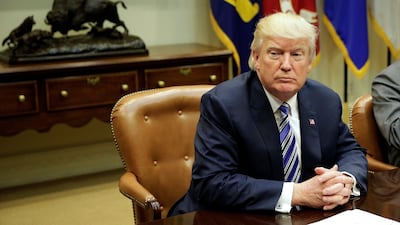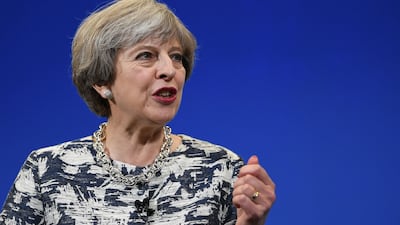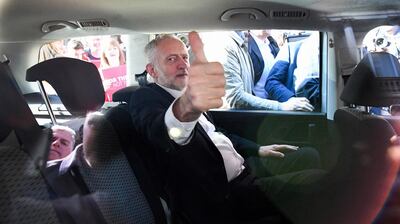On Thursday, the United Kingdom goes to the polls in a general election that looked to be heading in only one direction – an increased majority for the reigning Conservative Party. However, with opinion polls tightening, there is now the scent of a proper political war in the air.
Here is our guide to Election Day.
Voting
The polls will remain open on Thursday throughout the UK between 7am and 10pm – though if someone is in a polling station queue at 10pm they will (or at least should) be allowed to vote.
The magic number
There are 650 one-seat constituencies – each with an average of 72,000 eligible voters – therefore a parliamentary majority requires 326 seats.
In theory.
In reality, because the speaker doesn’t vote, and Sinn Féin MPs have no particular interest in voting, the working majority is always a few seats less than that.

The voting system
It is the simplest voting format in the world. The candidate with the most ballot papers that have an “X” beside their name wins. QED. None of this complicated proportional representation nonsense we love in Ireland. The first-past-the-post system also has the advantage (or disadvantage, depending on your viewpoint) of, usually, resulting in one-party majority governments. However, the system also results in many predictable constituencies which leaves voters of other parties feeling forgotten and disenfranchised.
And it also means many candidates will be elected without the support of a majority of the voters in their respective constituency. In fact, Dr Alasdair McDonnell, in retaining his Belfast South seat two years ago, set a Westminster parliamentary record, by winning with just 24.5 per cent of the vote. The SDLP man broke a record previously held by Liberal Democrat Russell Johnston who won Inverness, Nairn and Lochaber in 1992 with 26 per cent of the vote. Eight politicians have won a House of Commons seat with less than 30 per cent of the vote.
The voters
Along with UK subjects, Republic of Ireland citizens that are resident in Britain or Northern Ireland are also eligible to vote. Turnout in the 2015 general election was a relatively healthy 66.4 per cent – though last year’s EU referendum was a much higher 72.2 per cent. The Labour Party will be particularly keen to get the youth vote out, with opinion polls showing a heavy bias for Labour from the young, and for the Conservaties from the old. However, in 2015, the turnout among those aged 18-24 was just 43 per cent.
And we should believe opinion polls?
No. Of course not. However, they are more accurate than perhaps recent coverage gives them credit for. At the very least they can show a trend, and recently the momentum appears to be with the Labour Party. However, in 2015, polls running up to election day hugely underestimated the Conservative Party’s popularity.

We could also drop in a mention here of the Brexit referendum and Donald Trump’s US election victory (but we won’t).
Regardless, an exit poll will be released at 10pm on Thursday night, which measures how a sizeable number of people in the UK actually voted. It will ssurely be a better guide than any opinion poll taken during the campaign. You can see the result of the exit poll on irishtimes.com at 10pm.
The issues
Naturally enough, Brexit has been to the fore in every debate over the past few weeks. There’s really no chance that this election will impact on whether the UK leaves the EU, but it could have a major influence on the kind of deal agreed – each party has a completely different view on how divorce proceedings should go, and how amicable they should be. And, whoever claims 10 Downing Street won’t have much time to celebrate. UK-EU Brexit negotiations begin 11 days after the election.
Also, with two major terrorist incidents in England over the past few weeks, security has jumped ahead of other regular topics of debate – such as healthcare and education. With Saturday’s deadly attack in London coming less than two weeks after the horrific suicide-bombing in Manchester, it is impossible to know how the fear of future attacks might influence voters on Thursday.

While, traditionally, security fears generally drives people to vote more conservatively, prime minister Theresa May has endured fierce criticism in recent days due to cuts in the police force which she oversaw in her previous role as home secretary.
And then there is Scotland
Consider this. In the 2010 general election in Scotland, no seat changed party. In the 2015 election, 50 of the 59 seats changed party. Two years ago, in an unprecendented landslide, the Scottish National Party claimed 56 seats, increasing their representation at Westminster by 50 MPs.
The Conservative Party, Labour and Liberal Democrats were reduced to one seat each, and those parties will be keen to regain a foothold in Scotland this week.
If SNP can even come close to their last performance, the plan for a second inddependence referendum will gain momentum.
Back up, why is there an election on Thursday?
With the recent surge for the Labour Party in the polls, many Conservatives are probably wondering that too. Under the Fixed Term Parliaments Act, there was meant to be a general election in the UK only every five years. However, one could still be authorised if voted for by two-thirds of MPs (434). And, of course, that is exactly what happened this time, after Thereas May announced her decision. The opposition parties could hardly have voted against a general election.
But why did she call it? That depends on who you believe.
Theresa May says she called the election because she was facing too much opposition ahead of vital Brexit negotiations. This election would give the Conversatives a strong mandate heading into those talks.

However, opponents say she wanted to take advantage of a massive lead in the opinion polls – with Jeremy Corbyn’s Labour Party looking hopelessly divided and Ukip crumbling – to give herself an increased majority.
The parties
Most people are familiar with main parties, and the current the state of play for the big three at Westminster is:
Conservative Party (Theresa May) 330 seats;
Labour Party (Jeremy Corbyn) 232;
Scottish National Party (Nicola Sturgeon) 56.
Remember, 326 is the official number for a controlling majority in the House of Commons.
There are also some less well-known parties registered for this election, including the Give Me Back Elmo Party, Church of the Militant Elvis, Space Navies Party, Pirate Party, Al-Zebabist Nation of Ooog, Beer, Baccy and Scratchings Beer Party and, of course, the Monster Raving Loony Party (who have 12 candidates standing for election).
No majority
Well, if there’s a hung parliament after Thursday’s election, a few things can happen . . .
– Familiar to Irish citizens, there could be a coalition government, though a party such as the Liberal Democrats would surely be reluctant to repeat their decision after the 2010 election when they formed a government with the Tories. Also, the Labour Party and the SNP would make for strange bedfellows. During the campaign, Conservative politicians and commentators have regularly refered to a “Coalition of Chaos” – meaning some kind of grand coalition between Labour, the SNP, the Liberal Democrats, and possibly others, such as the SDLP and Green Party.
– Perhaps, more likely, a minority government could be formed. It is very unusual in UK politics, though Jeremy Corbyn has suggested it is a viable option for the Labour Party.
– A third option would be to have another election.
Whisper that softly – hopefully, the next election will be in May, 2022.









